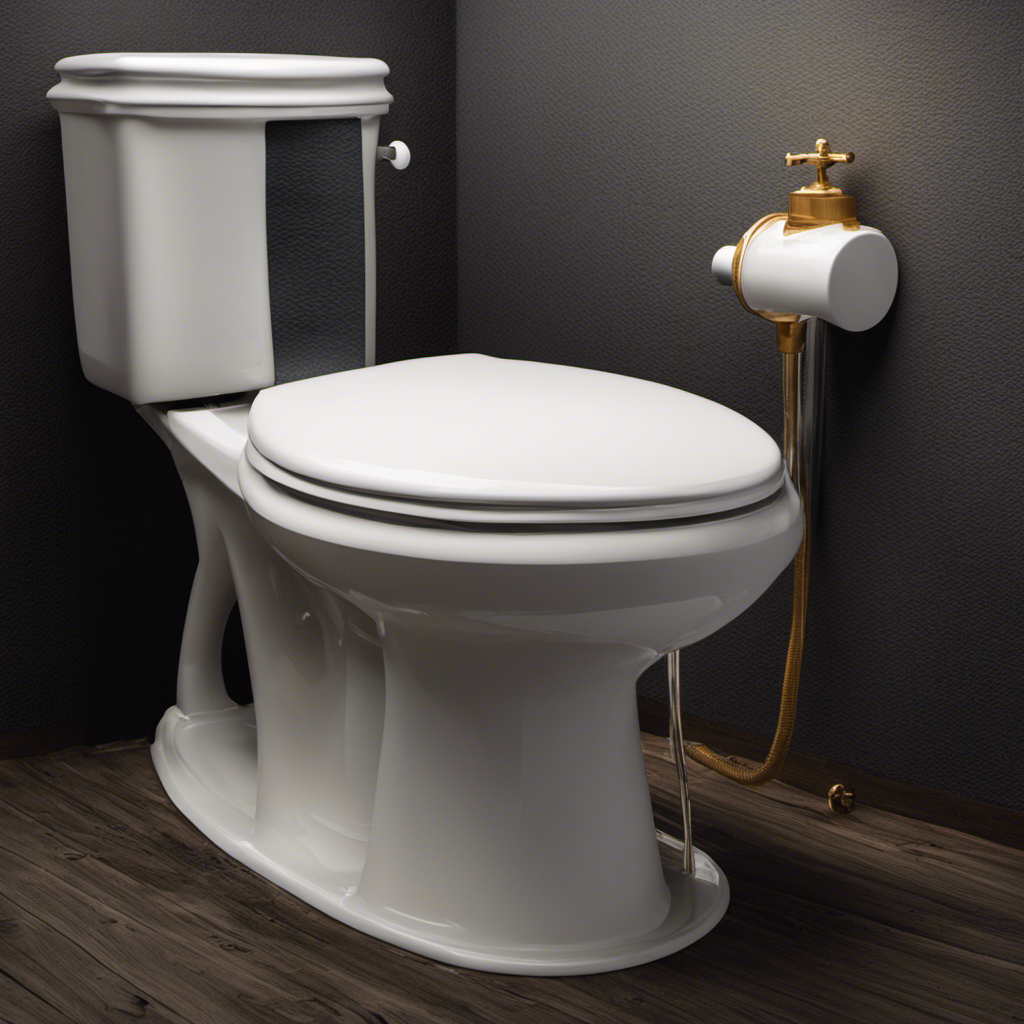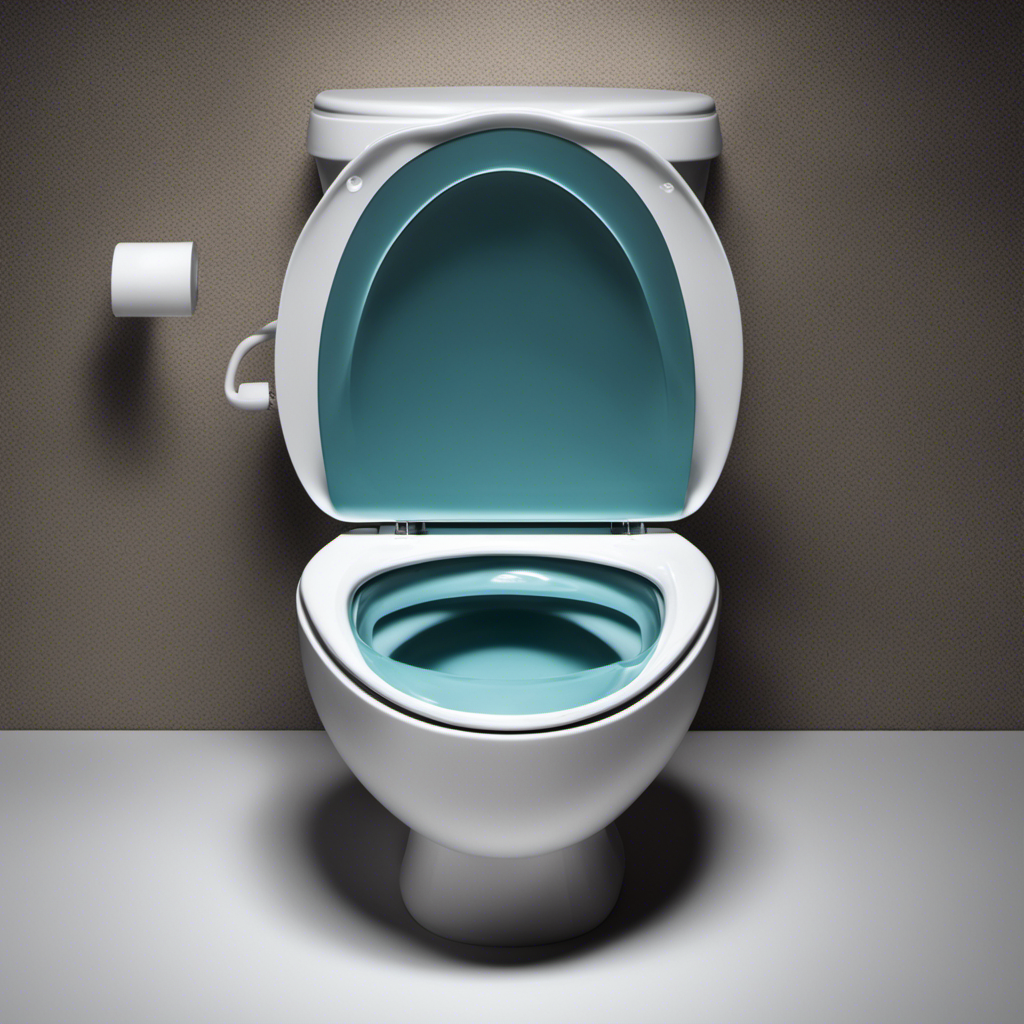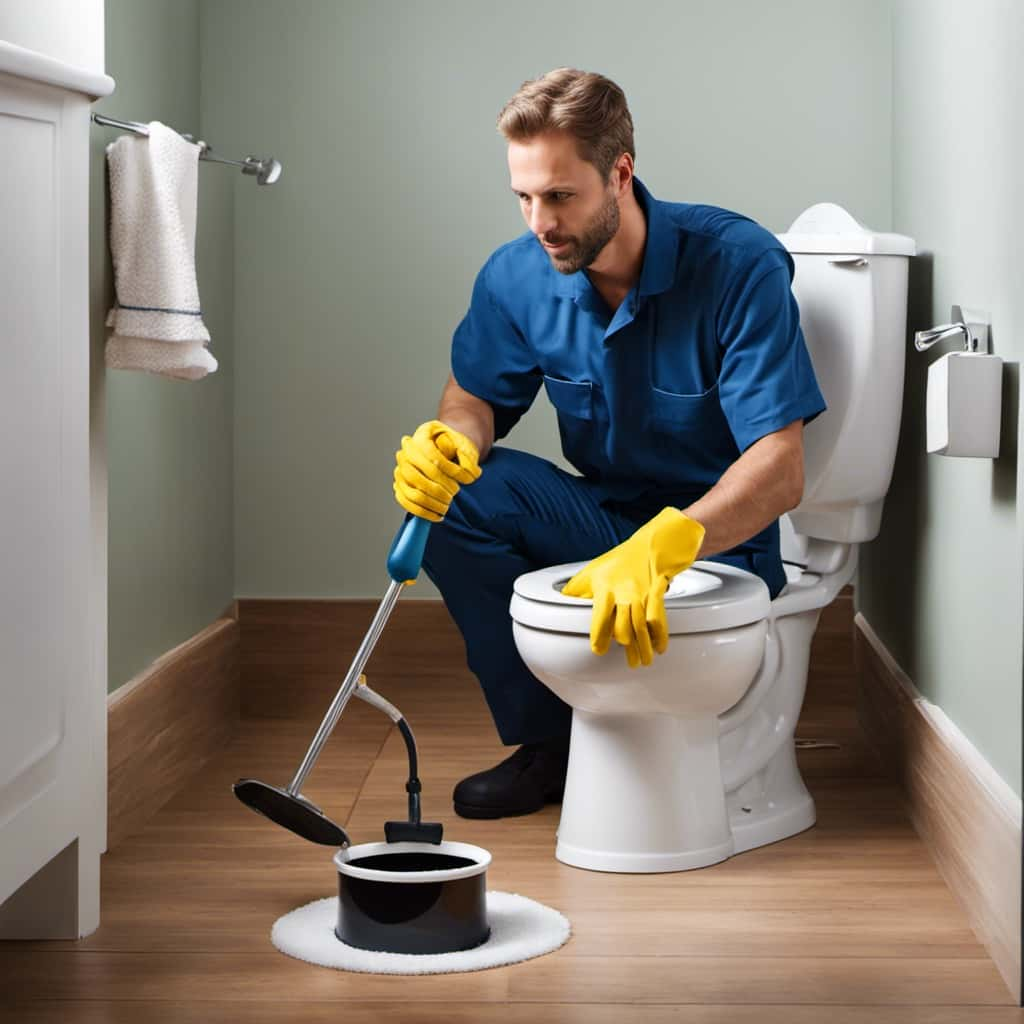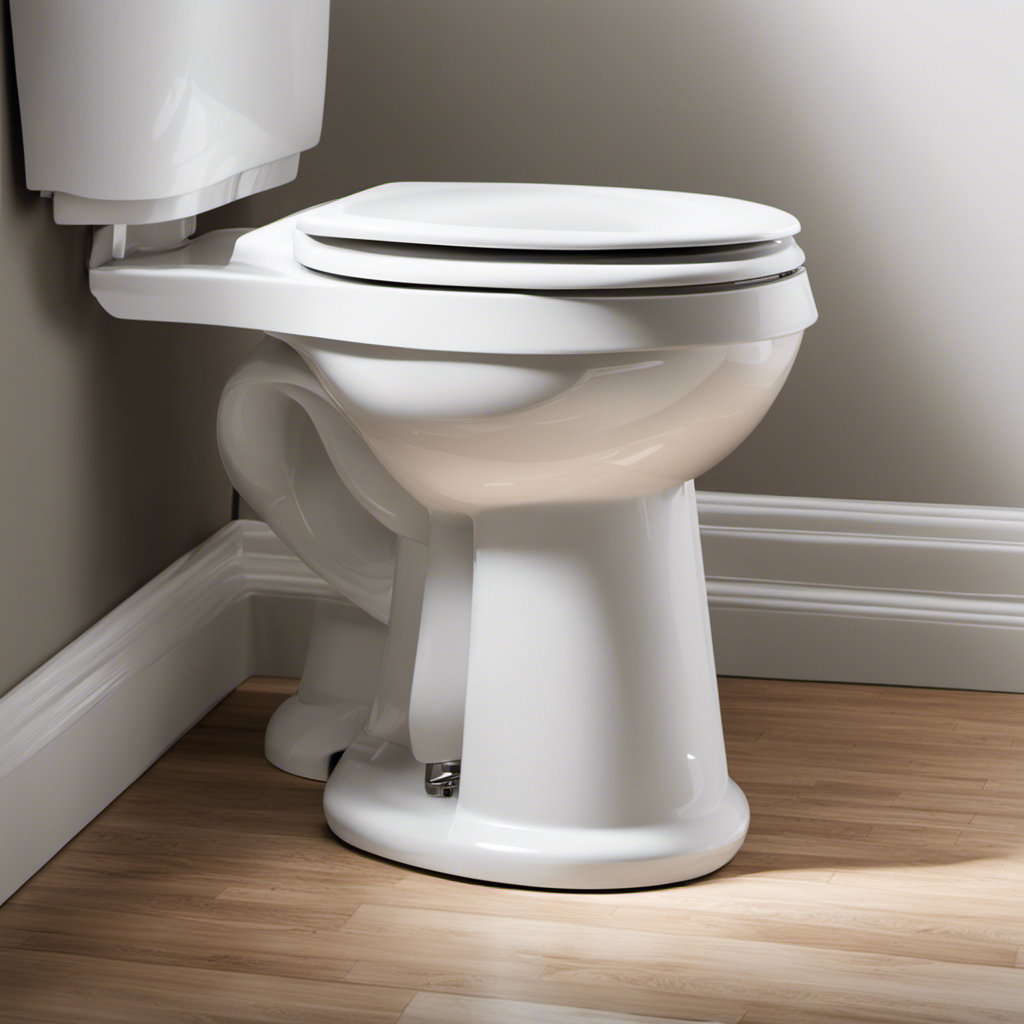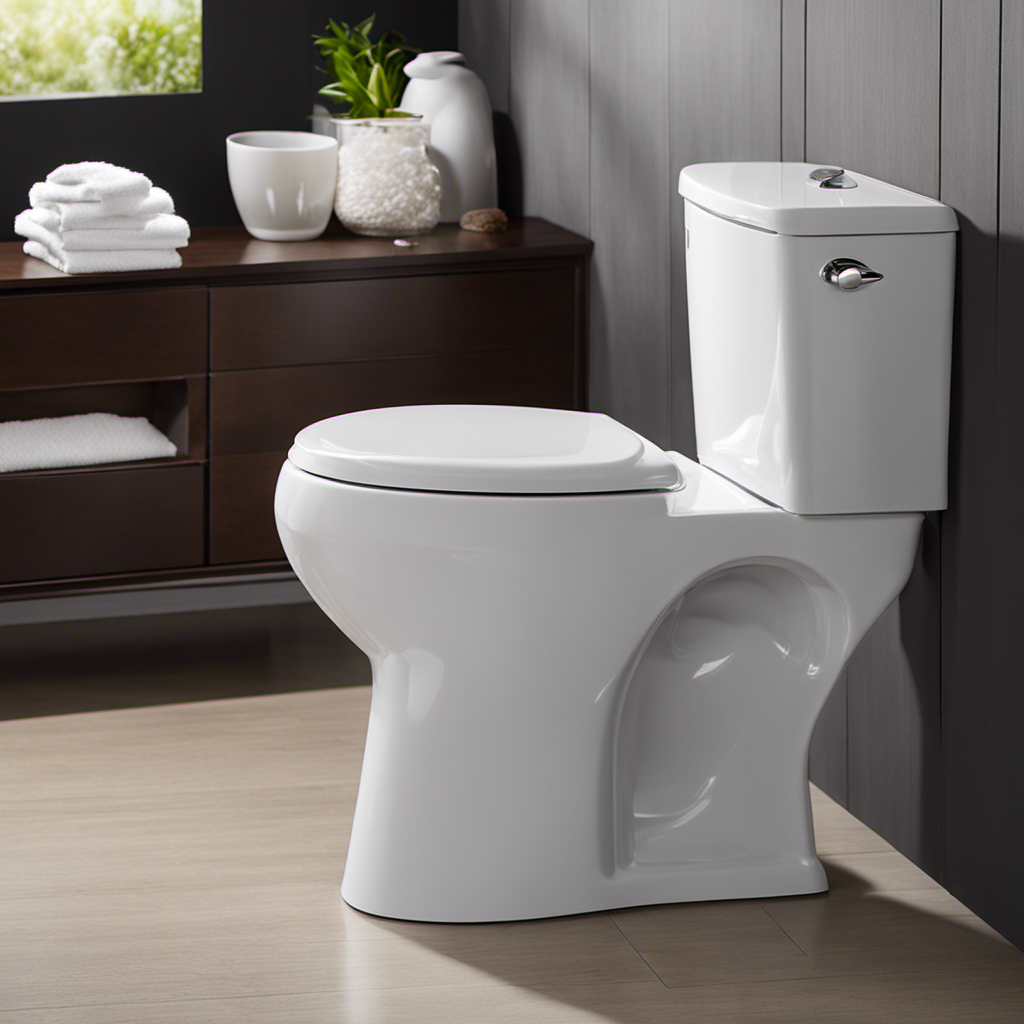Oh boy, do I have a story for you! Ever wondered what’s really going on when your toilet just won’t stop running?
Well, get ready to be amazed because I’m about to spill the beans on all the nitty-gritty details. From faulty flapper valves to malfunctioning fill valves, I’ll be your trusty guide through the labyrinth of toilet troubles.
So buckle up, my friends, because we’re about to embark on a journey into the fascinating world of what causes a toilet to run.
Key Takeaways
- A worn or misaligned flapper is a common cause of a running toilet.
- Improperly adjusted float ball can also lead to a toilet running continuously or having a weak flush.
- A malfunctioning fill valve can affect the proper filling of the toilet tank.
- A worn-out flapper can cause a leaky flush valve and increased water usage.
Common Toilet Running Issues
One of the most common toilet running issues is a faulty flapper. The flapper is a rubber seal located at the bottom of the toilet tank, responsible for controlling the flow of water into the bowl during a flush.
Over time, the flapper can become worn or misaligned, causing water to continuously leak from the tank into the bowl. This constant running of water not only wastes water but can also lead to a higher water bill.
To address this issue, regular toilet tank maintenance is necessary. Troubleshooting the toilet flush involves checking the flapper for any signs of damage or misalignment. If the flapper is worn or not sealing properly, it needs to be replaced to restore the proper functioning of the toilet.
Faulty Flapper Valve
Check if your toilet’s flapper valve is faulty when it keeps running. A faulty flapper valve is a common cause of a running toilet and can lead to water wastage and increased utility bills. To diagnose and troubleshoot this issue, follow these steps:
- Check the flapper valve for any signs of wear or damage.
- Ensure that the flapper valve is properly sealing the flush valve opening.
- Clean the flapper valve and the flush valve seat to remove any debris or mineral deposits.
- Adjust the chain length connecting the flapper valve to the flush handle to ensure proper operation.
By addressing a faulty flapper valve promptly, you can save water and money.
If the issue persists or if you are unsure about performing these steps, it is recommended to consult a professional plumber for further assistance in diagnosing toilet leaks and troubleshooting running toilets.
Problems With the Float Ball
To address problems with the float ball, make sure that it is properly adjusted and not interfering with the operation of the toilet. If the float ball is not functioning correctly, it can cause the toilet to continuously run or not fill up properly after flushing. One common issue is when the float ball is set too high, causing the water level to rise above the overflow tube and continuously flow into the toilet bowl. On the other hand, if the float ball is set too low, the water level will not reach the desired level, resulting in a weak flush. In some cases, the float ball may be damaged or worn out and require replacement. Adjusting the float ball height or replacing it altogether can usually resolve these problems.
Here is a table that illustrates the correct float ball height for different toilet systems:
| Toilet Type | Float Ball Height |
|---|---|
| Standard | 1 inch above waterline |
| High Efficiency | Level with waterline |
| Dual Flush | 1/2 inch above waterline |
| Pressure-Assisted | Level with waterline |
Malfunctioning Fill Valve
If the fill valve is malfunctioning, it can lead to issues with the proper filling of the toilet tank. To address this problem, there are a few replacement options and troubleshooting steps you can take:
-
Check the water supply: Ensure that the water supply to the toilet is fully open and not blocked.
-
Inspect the fill valve: Look for any visible signs of damage or wear on the fill valve. If necessary, consider replacing it.
-
Adjust the float arm: The float arm should be positioned properly to control the water level in the tank. Make adjustments if needed.
-
Clean the fill valve: Sediment or debris may be causing the valve to malfunction. Clean the valve to remove any obstructions.
Leaky Flush Valve
The most common issue with a leaky flush valve is a worn-out flapper that needs to be replaced. When the flapper becomes worn or damaged, it loses its ability to create a watertight seal, causing water to continuously leak from the tank into the bowl. This can result in a constant toilet running sound and a noticeable increase in water usage.
Troubleshooting toilet leaks requires a few simple steps. First, check the flapper for any signs of wear or damage. If necessary, remove the old flapper and install a new one. Additionally, ensure that the chain connecting the flapper to the flush handle is properly adjusted.
Conclusion
So, there you have it. The toilet running issue demystified. Who would have thought that such a simple contraption could cause such frustration?
But fear not, dear reader, for now armed with the knowledge of the faulty flapper valve, problems with the float ball, malfunctioning fill valve, and leaky flush valve, you can confidently tackle any running toilet.
Embrace the irony of a small component wreaking havoc on your bathroom tranquility. Remember, with great power comes great responsibility.
Happy toilet troubleshooting!
